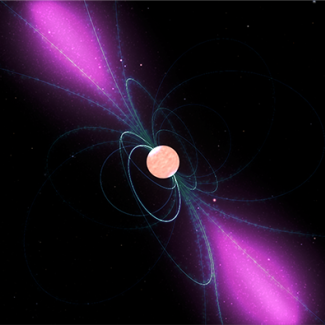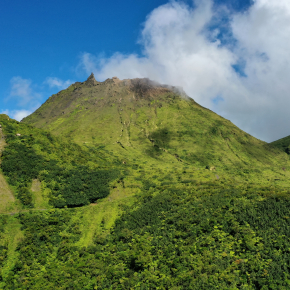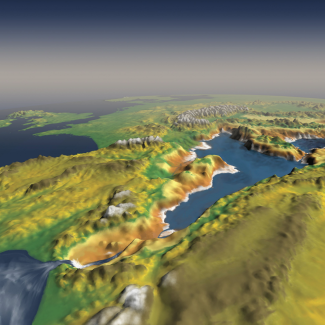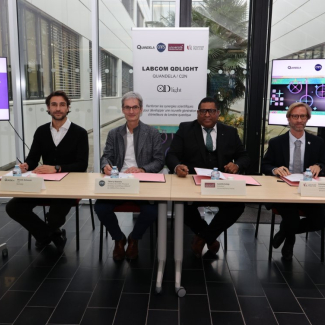
An innovative system for seeing into the bowels of volcanos
A team of researchers from the CNRS and the Paris Institute of Planetary Physics1 has developed an innovative imaging method that can probe the bowels of a volcano with unparalleled resolution and depth. This new method is based on the deployment of a network of geophones that capture not only the powerful shaking of earthquakes, but also the seismic noise caused by wind, the ocean, and human activity.
Their study was conducted on La Soufrière volcano in Guadeloupe, and provided a 3D view of its internal structure to a depth of 10 kilometres, with a precision on the order of 100 metres. It confirmed the existence, in the depths beneath La Soufrière, of a large magma storage zone structured by a network of interconnected magma pockets. This imaging tool can be applied to any geophone network and could record volcanic activity much more thoroughly, thereby providing greater anticipation of volcanic eruptions throughout the world.
The study recently appeared in the journal Communications, Earth & Environment.

- 1From the Langevin Institute (CNRS/ESPCI – PSL Université) and the Paris Institute of Planetary Physics (CNRS/Université Paris Cité).
Matrix imaging as a tool for high-resolution monitoring of deep volcanic plumbing systems with seismic noise. Elsa Giraudat, Arnaud Burtin, Arthur Le Ber, Mathias Fink, Jean-Christophe Komorowski & Alexandre Aubry. Communications, Earth & Environment, 16 September 2024.
https://doi.org/10.1038/s43247-024-01659-2


